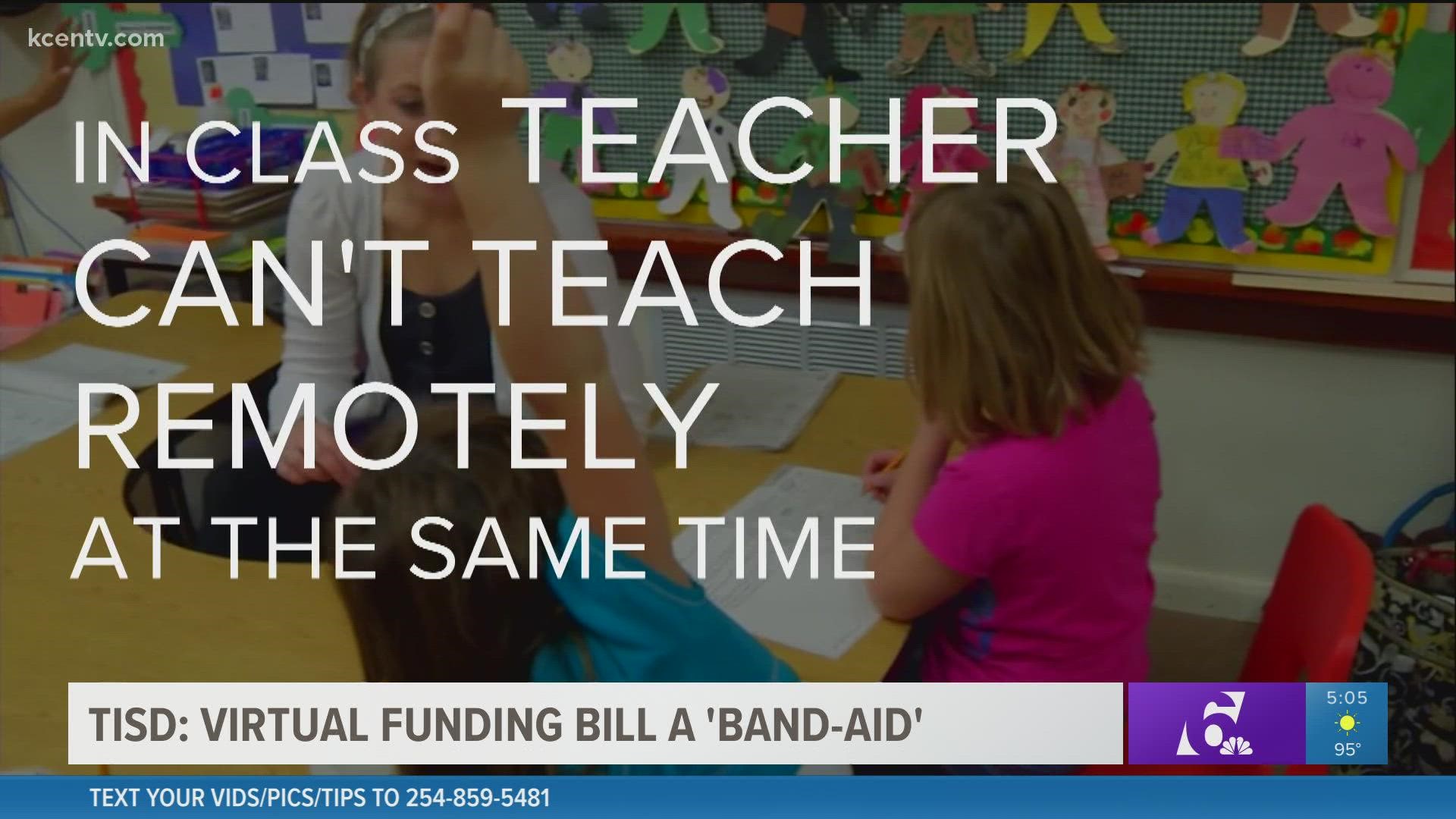TEMPLE, Texas — The Texas House of Representatives passed SB 15 on Monday and the bill is now headed to the governor's desk. While the bill is intended to "grant districts and charter schools the ability to establish and/or continue full-time virtual learning programs," according to the initial bill analysis, parents shouldn't be expecting to have that option.
Temple ISD Superintendent Bobby Ott told 6 News Monday the bill has multiple "guard rails" that keep it from being an effective for their district.
SB 15 grants districts the ability to get "attendance funding" from the state for remote learning. As Ott explained, this was the same money the school district would be getting anyway for in-class students, but the legislature is now allowing a portion of it to be used for remote learning.
"It's not additional funding. That student was already being funded," Ott said. "Now you are allowed to count that student in a virtual environment and receive the funding they would have received if they were sitting in a class."
Ott said the Texas Legislature currently does not allow attendance funding to go towards virtual education.
Unfortunately, even if SB 15 passes, the funding would only apply to 10% of a school district's students. Ott said that the cap alone created a lot of issues in looking at implementation.
"Last year was parental choice. This won't be parental choice. There's a 10% cap. That requires a school district to have some type of waiting list or lottery. You could have students on the outside of that line that could argue they should be on the inside of that line. That's a very difficult situation," Ott said.
The legislation would require school districts which offered remote learning to have at least a "C" performance grade from the Texas Education Agency. Ott said school districts also would not be able to require a teacher who is teaching in-class to also teach students online at the same time. Temple ISD would possibly need to hire more teachers to make the system work.
The bill could be beneficial to some school districts. Midway ISD has already confirmed they will have 90 students between kindergarten through twelfth grade in a "Midway Virtual School," though the school district is still finishing arrangements for the program.
Midway ISD told 6 News Monday, via a statement, the district should have that program structured to meet all the criteria for SB 15 and would possibly be able to use some funding to offset the cost of the new program.
Midway ISD would not be able to say for sure until the final version of the bill is signed by the governor.
Ott said Temple ISD would not be taking advantage of the program because they had not planned to incur the extra cost of a remote learning program. If Temple ISD had to close a campus, Ott said the school district would use a remote conferencing option which can last 20 days according to current rules. At the same time, Ott said he believed continuing in-person classes is by far the best option for students in the district.
"For us as a school district, you have to be confident that what you are offering, and what students are getting out of it, is high quality, and I would say that virtual education has failed across the state miserably," Ott said. "It's irrefutable that virtual education was a less viable option."
Ott also said the school district would still work with students who have medical conditions making them vulnerable to COVID-19 by offering homebound services.

